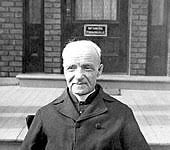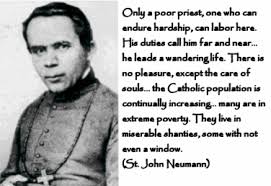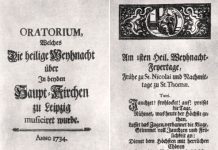Today, July 9th, is the feast of the Martyrs of Gorkum in the Netherlands, and their story is truly fascinating.
At the beginning of the 16th century, everyone was Catholic in the Netherlands, but that changed with the Reformation, whose beginning we may trace to Luther’s proclamation of 1517. The people who joined this movement called themselves the Reformed and, much later, the Protestants. The invention of the printing press enabled their ideas to spread like wildfire. The Reformed were against Catholics, whom they viewed as superstitious – religious wars broke out everywhere, including Gorkum.
The Reformed wanted to practice their own faith. They did this by meeting outside the walls of the Catholic city of Gorkum on Sundays. Here they held what were called hedge sermons. They protested against the power and great wealth of the Catholic Church. They demanded that they be allowed to practice their own religion within the city walls. In 1566, these protests led to the iconoclasm, in which a lot of damage was inflicted to Catholic churches as well as monasteries.
In Gorkum, the battle between the religions was temporarily settled by giving the Reformed a wooden shed outside the city walls. There they met on Wednesdays and Sundays for their own services. The shed was called Geuzen House but it was not a great success. What they really wanted was a church in the City. But the Catholics, of course, would not give up any of their churches. At the time Philip II of Spain ruled all of Europe, so he also ruled over the County of Holland and its leader William of Orange. William was a Protestant, so he fled to Germany and from there organized a revolt against the King of Spain.
Philip II was incensed and sent one of his most implacable generals, the Duke of Alba, to Holland. The Duke had three goals in mind: First, to collect taxes to pay for the war; to second, to prosecute the Protestant rebels; and third, to restore peace. From then on, everyone had to give a tenth of all they owned to the Spanish occupier. This was known in history as the tenth penny. This fact caused more and more unrest among the people of Holland. Soon enough was enough; the country rebelled and the rebels called themselves Beggars.
On 1 April 1572, the protestant Sea Beggars led by admiral Lumey sailed their ships to Brielle (Den Briel). Together with 1,100 soldiers, they captured the city. The Catholic clergy were chased out of the city, imprisoned or even killed. The Beggars then sailed further up the river towards Gorkum.
Most of the people of Gorkum were pleased with the arrival of the Sea Beggars, who were allowed through the city gates if they promised not to plunder the town. But Gorkum’s castle, The Blue Tower, was defended by the mayor Casper Turck, who was still loyal to the Spanish king, Philip II. Priests sought safety within the strong walls of the castle, but the Beggars set fire to the castle gatehouse. Soon afterwards, the gate fell and the Beggars captured the castle.
The valuable church treasures were sold by the city council, who wanted to use the proceeds to improve the city’s defences, and nineteen Catholic clergy members were arrested and tortured because they refused to give up their faith. The clerics comprised eleven Friars Minor with their superior, priests and their assistants, one Dominican, one Augustinian and two Norbertine monks. Most of them came from Gorkum, so they were called the Martyrs of Gorkum. Shortly afterwards they were taken away by ship to Dordrecht.
A stopover in Dordrecht meant more humiliation for the clergy prisoners. When the ship was anchored in the harbour, the soldiers took away the cleric’s clothes and sold them at the market. Cruelly, the men were exhibited in their undergarments for anyone willing to pay a fee. The crowds rushed out to see this extraordinary spectacle as well as to boo them.
Later, the ship sailed on to Brielle. The gallows stood ready nearby, but first the clerics were tortured in the dungeon of the city prison. There they almost gave up due to fatigue, pain and misery. They were once again brutally questioned in a final attempt to get them to give up their faith. All but one refused, and so death awaited them.
Meanwhile, William of Orange ordered that the clerics be released, but Lumey ignored William’s order. The clerics were finally hanged on the gallows, which stood ready in a turf shed at the St. Elizabeth Monastery in the village of Rugge near Brielle. Thus, nineteen men died a violent death because they would not give up their faith.
In 1675, the clerics were beatified by Pope Benedict XIV, and canonized as martyrs by Pius IX in 1867. There was even a small miracle associated with these martyrs. A priest picked a flower with three petals that was growing on their grave. He put it away, but more than three years later he found the flower again, not dried but blooming.
In the village of Rugge, near Brielle, a monument to commemorate these terrible events and the outstanding witness of these heroic martyrs now stands on the field where the murders took place. The Martyrs are well known in Holland and even in other places around the world and can be seen depicted in paintings, statues and stained glass windows. They are remembered for their unshakeable faith even though brutally punished for their beliefs.
O Holy Martyrs of Gorkum, you who remained faithful to Christ and the Church even unto death, pray for us, that we may have the courage to stand firm in our faith amidst adversity. Help us to foster unity and solidarity within our communities, supporting one another in love and faithfulness. Through your intercession, may we be strengthened by the Holy Spirit to live out our faith with conviction and charity. Amen.










